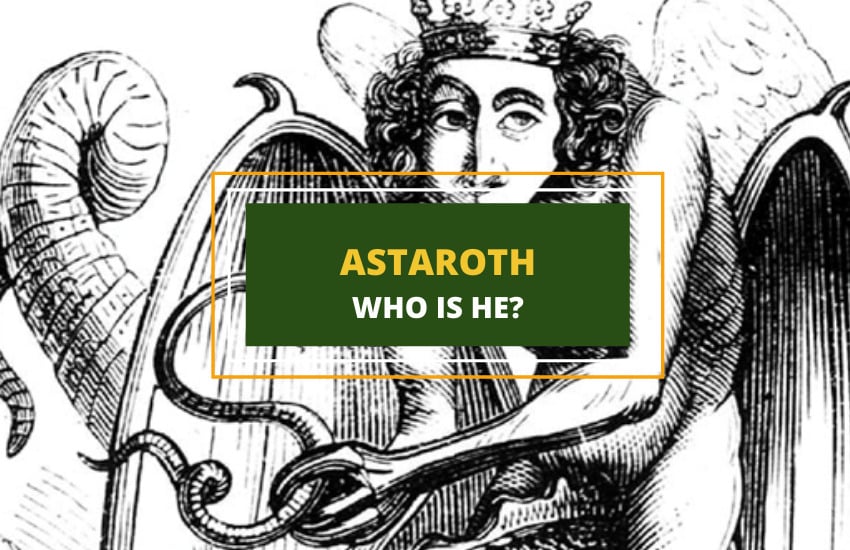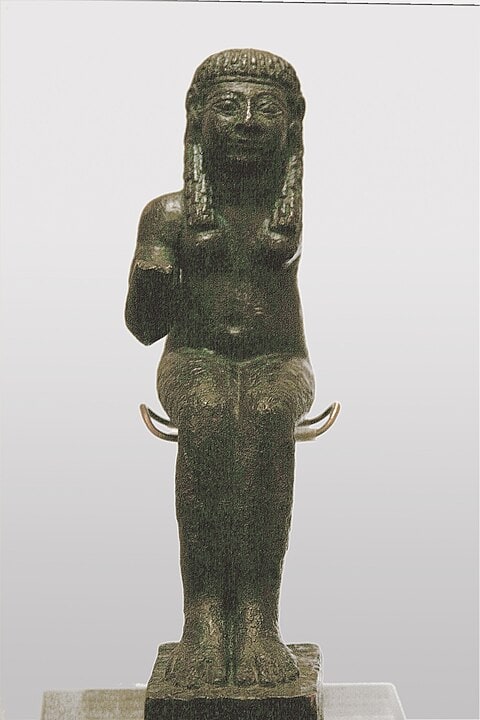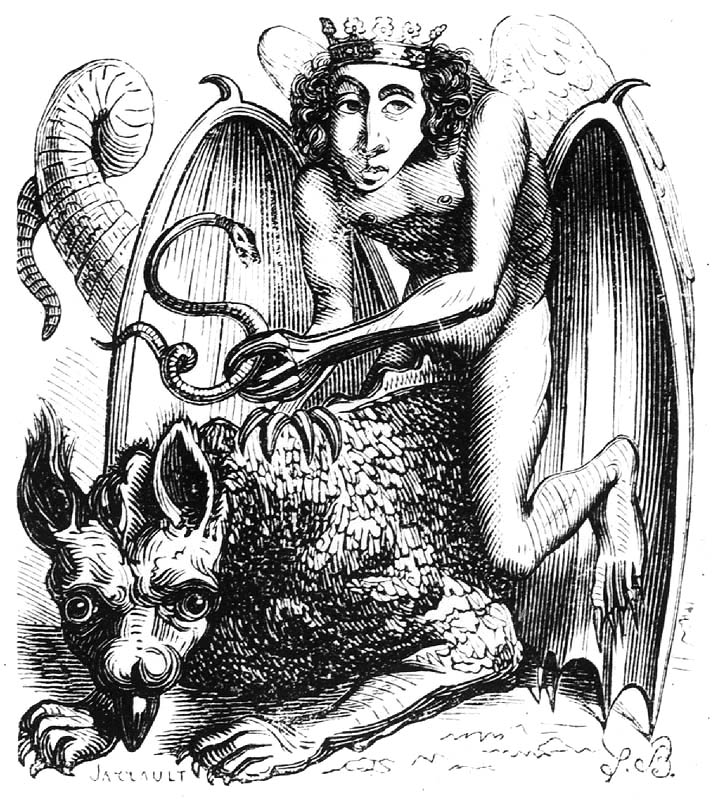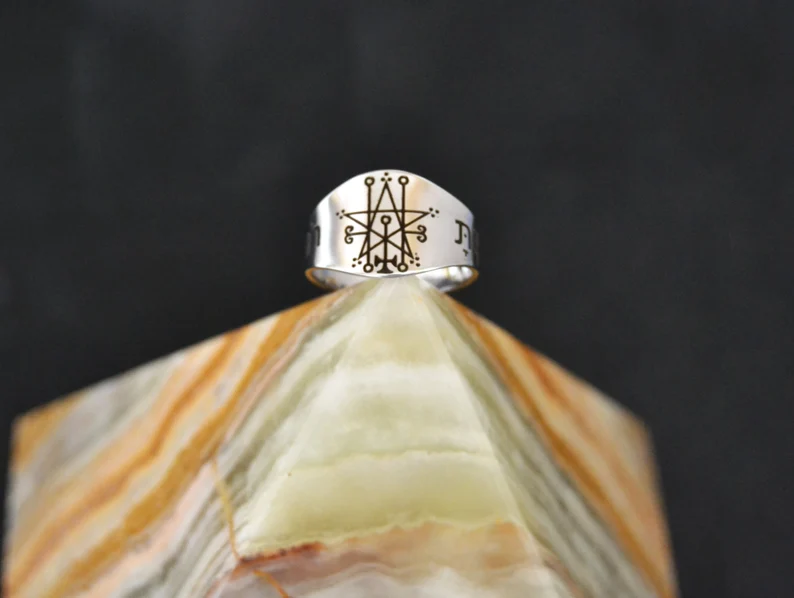
Table of Contents
Astaroth is a male demon of the highest ranking, joining Lucifer and Beelzebub as part of the unholy trinity ruling the kingdom of hell. He is the Duke of Hell. But Astaroth isn’t a very familiar name to most people. In fact, he isn’t even mentioned by name in the Hebrew Bible or the Christian New Testament. He isn’t featured as prominently in literature as Lucifer and Beelzebub. He remains a shadowy character.
But if we trace his origins, a very different picture begins to emerge. Astaroth may be a male Christian demon, but evidence shows that he used to be a pagan goddess. Let’s take a look at the evolution of this mythical being.
In the Beginning – Goddess Astarte
The name Astaroth is likely derived from Astarte, also known as Ashtart or Athtart. Astarte was an ancient Phoenician goddess of love, fertility, and war. She was also worshipped in other cultures under different names, like goddess Ishtar (the Mesopotamian goddess of love, sex, beauty, war, and justice), and Aphrodite (the Greek goddess of love and beauty). These goddesses were associated with the planet Venus, and were known for their beauty and femininity.
However, as monotheistic religions, particularly Christianity, began to take hold, the polytheistic deities of the older religions were often demonized. This was a way to delegitimize and discourage the old religions.
Astaroth in the Hebrew Bible

Astaroth is mentioned many times in the Hebrew Bible, both as a place and as a foreign god. Genesis 14:5, Deuteronomy 1:4, and Joshua 13:31, for example, refer to a location called Ashteroth. As the Hebrews’ reputation for conquest grew, many of the people already present in Canaan began to seek peace treaties with them. One of the places where this happened was a city east of the Jordan river called Ashteroth.
Naming a city after a deity was a common way to invoke their blessing, much like Athens being named after its patron goddess Athena. So it’s no wonder that multiple archaeological sites in present day Syria have been identified with the pagan goddess Astarte. Subsequent references in the Old Testament refer to Ashtoreth as a foreign god:
Judges 2:13: “They forsook the LORD and served Baal and the Ashtoreths.”
1 Samuel 7:3-4: “Then Samuel said to all the house of Israel, ‘If you are returning to the LORD with all your heart, then put away the foreign gods and the Ashtoreths from among you and direct your heart to the LORD and serve him only, and he will deliver you out of the hand of the Philistines.’ So the people of Israel put away the Baals and the Ashtoreths, and they served the LORD only.”
1 Kings 11:5: “For Solomon went after Ashtoreth the goddess of the Sidonians, and after Milcom the abomination of the Ammonites.”
1 Kings 11:33: “Because that they have forsaken me, and have worshipped Ashtoreth the goddess of the Zidonians, Chemosh the god of the Moabites, and Milcom the god of the children of Ammon, and have not walked in my ways, to do that which is right in mine eyes, and to keep my statutes and my judgments, as did David his father.”
In these references, Ashtoreth is associated with false worship and idolatry. The people are chastised for turning away from Yahweh and towards these gods. From here, it’s doesn’t take a huge leap of the imagination to see how Ashtoreth became a Christian demon.
How Ashtoreth became the Demon Astaroth

It seems that the name Astaroth was appropriated and adapted from these references and turned into a Christian demon during the 16th century. This was the period when Christian demonology flourished. Multiple early works on demonology, including The False Monarchy of Demons, published in 1577 by Johann Weyer, describe Astaroth as a male demon, the Duke of Hell and member of the evil trinity alongside Lucifer and Beelzebub. You can still find that book in publication. Check it out here.
Astaroth also appears in various grimoires (books of magic) like the Pseudomonarchia Daemonum and the Lesser Key of Solomon as a high-ranking, powerful demon.
In these versions, Astaroth isn’t a physically powerful demon. He is most often depicted as a naked man with dragon’s claws and wings, holding a serpent, wearing a crown, and riding upon a wolf. He is the Demon of Sloth, in that he makes others lazy by enhancing a mixture of vanity and self-doubt. .
But he appears to be quite smart. He uses his cunning to teach humans the sciences and mathematics which lead to the use of magical arts. Astaroth can also be called upon if you’re want to have the powers of persuasion and friendship for political and business advancement.
But if you want to resist Astaroth, you have to call upon St. Bartholomew, the Apostle of Jesus and first missionary to India.
What is the Sigil of Astaroth?

The Sigil of Astaroth is a complex symbol full of symbolic elements, each holding meaning. It’s a popular occult symbol. The sigil features a pentacle set within a circle. The sets of three dots arranged in a triangle at the points of the star are ancient symbols, representing Astaroth’s elevated spiritual status. There’s no single interpretation of the sigil.
However, in general, such symbols are used to focus the mind and establish a psychic connection with the entity it represents.
Astaroth In Popular Media
Astaroth isn’t very popular in modern culture. There are only a few prominent depictions in film and literature today.
Astaroth is one of the demons summoned by Faustus in the famous play Doctor Faustus, written and performed between 1589 and 1593. The play is based upon preexisting German legends of a man named Faust. In it the doctor learns the art of necromancy, communicating with the dead, and makes a pact with Lucifer. The play had such a profound impact and powerful effect on many that several reports of actual demons appearing during the show and some attendees reportedly were driven mad.
Another popular mention of Astaroth is in the 1971 Disney Film Bedknobs and Broomsticks. In the movie, three children are sent to the English countryside and placed in the care of a woman named Miss Price during the German blitz of London. Miss Price is learning witchcraft and her spells have unintended consequences. They all must travel to magical places in search of the medallion in order to undo the previous spells. In the movie Astaroth is a sorcerer.
In Brief
A male demon, Astaroth ruled the kingdom of hell together with Beelzebub and Lucifer. He represents a danger to humans, leading them astray by tempting them to misuse the sciences and mathematics. But his origins emerging from a pagan goddess is testament to how older deities were appropriated and demonized. This shift of Astarte to Astaroth is not a simple name change but represents deeper religious, cultural, and even political changes over centuries.








